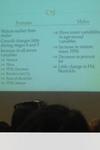3/17/2014 test #3 Flashcards
(30 cards)
Does not occur at the same rate Is influenced by all three constraints has no unified theory (covering 3 domains)
Development
Skeletal Ossification Size and shape Dental Deciduous and permanent teeth X-ray of teeth and jaw (ossification) Age of menarche Genitalia maturity
Scales of maturation
Biological Inherited Environmental Maturation (Process Biological time clock- largely genetic ) Physical growth (Changes in lengths, diameters, breadths, ratios, relative and absolute dimensions Rate (velocity) and distance (absolute) Sexual maturation and reproductive maturation Genetic and environmental )
Growth and Maturation
(picture of x-ray of hand) Skeletal ossification Epiphyseal plates Size and shape (old people bones are swollen with arthritis, makes joints bigger )
More on scales of maturation
Increases in Stature Mass Fat free mass (FFM) fat mass relative fatness (percent) sum of skin folds
With age and sexual maturity
Stature mass FFM
increases across age and maturation
Fat mass triceps skin folds sub scapular skin fold
very little changes across age and maturation
Relative fatness (percent) goes down
decrease across age and maturation
Changes are rapid reach “maturation” stay that way 40 years changes at old age slow determining maturation is difficult
Challenge of scales
Explains growth before birth
Hyperplasia
Explains growth after birth
Hypertrophy

Gender differences in growth and maturtation


Scales
Menarche, sperm arch
Rate of maturation varies by domain or system
Patterns of growth and maturation for boys and girls
Deciduous, ossification, Epiphyseal, PHV, Menopause, FFM, relative fat, stature, mass
Maturation
Distance and velocity curves
Changes in linear proportions from B-maturity
Hyperplasia, hypertrophy
Growth
Stature is highly heritable
Upper and lower limit set by genes
Maturation is heritable
Environmental determines how close to boundary
Later maturation individuals grow for more months
Greater stature
Males grow 2 years more than females
Legs grow more rapidly than torso or head
Therefore on average
MALES ARE Taller
Males have longer legs
Stature summary
Other proportions picture ( on phone)
Decrease in relative size during the growth period. The diminishing circumferences reflect the ratio.
Males shoulders grow more than the hips and explain the ratios
Males and females shoulders are wider than their hips
look at i phone pic
Decrease in relative size during the growth period. The diminishing circumferences reflect the ratio.
Males shoulders grow more than the hips and explain the ratios
Males and females shoulders are wider than their hips
Normal healthy children
10-20% males
20-30% females
Menstruating women
+15%
Lifespan
Assumptions are based on bone and muscle
Elderly decrease in both
Often body weight does not change in old age
Body Fat
Males
42% skeletal muscle
20% bone
18% other lean
20% fat
Ages 20-40
Males gain 20 lbs fat
Males misplace skeletal muscle (10 lbs)
Males gain 30 lbs of fat 160-180 mass
20%A to 34% fat
Females
36% skeletal muscle
13-20% bone
18% other lean
30% fat
Typical Adults
Growth increases lean body mass
Males increase more in LBM than females
Females increase more in fat than males
Resulting in larger difference in relative fat
Summary on Body Composition
Has a positive impact on stature
More active children meet or exceed genetic expectations
Positive on body fat (less)
Positive on muscle (more)
Physical Activity


